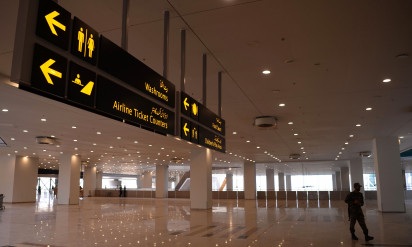In what has become one of the most significant weather-related air travel disruptions in recent months, both Islamabad International Airport and Lahore’s Allama Iqbal International Airport have been heavily impacted by intense weather patterns, causing extensive delays, flight cancellations, and even emergency maneuvers by pilots to ensure passenger safety. These events unfolded rapidly over the last 24 hours, sending ripples across the aviation sector and stranding thousands of passengers during a high-demand travel period.
In Islamabad, the impact has been particularly acute. According to preliminary air traffic control data, twenty-one flights have experienced notable delays, with both arrivals and departures suspended or deferred due to continuous rainfall, heavy winds, lightning activity, and poor visibility making it unsafe for aircraft to land or take off on schedule. Flights arriving from international hubs such as Riyadh, Abu Dhabi, Doha, Muscat, and Baku have been either significantly delayed or rerouted.
One incident that underscored the severity of the situation involved a Karachi-to-Islamabad domestic flight, which, mid-flight, was instructed to divert to Faisalabad Airport due to dangerous wind shear and visibility issues near Islamabad. This change, made in the interest of passenger safety, caused significant confusion and inconvenience among travelers, many of whom had tight schedules or connecting flights.
At Lahore Airport, the scene was equally chaotic. Seven outbound and inbound flights suffered delays ranging from one hour to an astonishing nine and a half hours. This included a long-haul flight from Kuala Lumpur, which had to be canceled entirely, citing runway instability due to water accumulation and storm activity.
A particularly harrowing episode was reported by passengers on a flight approaching Lahore, where violent air turbulence during final descent forced the pilot to abandon landing and execute an emergency go-around. The aircraft circled for approximately 15 minutes before the crew made the decision to return to Karachi, fearing that continuing the descent could jeopardize onboard safety. Passengers described a terrifying experience, with cabin lights flickering, oxygen masks shaking slightly from overhead compartments, and a collective moment of panic as the aircraft struggled to maintain control in the harsh air currents. Some passengers were seen visibly shaken afterward, with several deciding to cancel or postpone their travel plans altogether.
The emotional and logistical toll on passengers has been considerable. Families traveling with children, the elderly, and people on medical travel itineraries have expressed frustration over lack of real-time updates, inadequate ground staff support, and limited access to refreshments or alternate bookings during extended wait times. Travel agents and airline representatives have been overwhelmed, with rebooking queues stretching several hours.
On the operational side, airport management teams and the Civil Aviation Authority (CAA) have ramped up their weather monitoring protocols and issued urgent directives to prioritize flight safety above all else, even if it means canceling or diverting scheduled services. Ground crew operations have also been scaled back during lightning alerts, further slowing the turnaround process for aircraft.
Analysts argue that these disruptions lay bare a deeper vulnerability in Pakistan’s aviation infrastructure a lack of modern weather forecasting integration, limited automated diversion protocols, and insufficient passenger handling mechanisms during crisis events. As global climate change leads to more frequent and extreme weather patterns, airports in the region may need urgent technological upgrades, runway drainage improvements, and better coordination with airlines to maintain operational resilience.
As of now, weather forecasts suggest that the storm system may persist intermittently over the next 24–48 hours. Authorities are urging passengers to stay informed, check airline websites regularly, and avoid non-essential travel until conditions stabilize. Travelers are also advised to arrive early at airports, carry essential medications and refreshments, and maintain open communication with airline personnel regarding cancellations or rerouting.
This weather-related disruption stands as a clear reminder of the fragility of air travel systems in the face of natural disturbances, and the importance of proactive crisis planning, passenger support, and infrastructural adaptability in modern aviation.



Comments (0)
No comments yet. Be the first to comment!
Leave a Comment